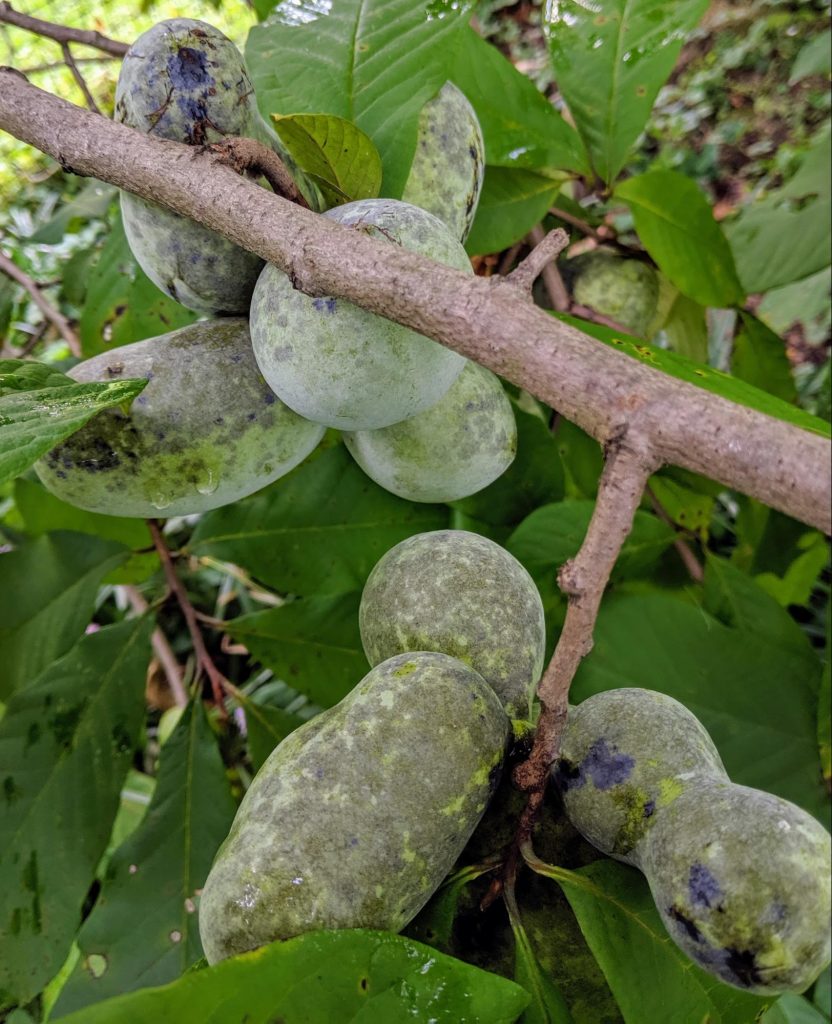
Another pawpaw season came and went across Appalachia. Pawpaws, or Asimina triloba, are a fruit that tastes like a cross between a banana and a mango and are a huge source of regional pride. The fruit has received some recent fame for its appearances on shows like Anthony Bourdain’s Parts Unknown (when he visited West Virginia in 2018) and featured in the Atlantic multiple times.
My grandmother has some in her backyard, and I’ve even had its jam shipped to Morocco. As I received pictures of my grandmother’s pawpaws of the season, I wondered: Are pawpaws are truly only grown in Appalachia?

In reality, this fruit is native to 26 states and a small portion of Canada. So even though it is widely known as an Appalachian fruit, it has a range beyond the region, reaching into the Midwest and parts of Texas. The pawpaw is a fruit that thrives in the eastern United States and the Appalachian mountain range. It has a high tolerance for shade, but the fruit often does better in full sunlight. Humidity is also critical for the development of pawpaw.
Lost in Translation: The Case of African Pawpaws
A quick Google search gives quite a few options for “pawpaws in Africa” and a few in Australia. Many different stock photos appear, along with recipe suggestions. If these fruits are only in Appalachia, then why are they listed as available across Africa? Is it a mistranslation? Could the fruit be more widespread than us proud Appalachian folk realize?
One online food blog helps differentiate between pawpaws and papayas in South Africa. The site notes that “A papaya has a sweeter, tropical flavour while pawpaw is a more mellow taste, often compared to banana.” I reached out to some pawpaw business accounts in Uganda and South Africa, but unfortunately, got no responses.
This Nigerian recipe notes “papaya is fondly called pawpaw.” Another South African one notes that the shape will differentiate papaya with pawpaw. Perhaps the name “pawpaw” derives from its similarities in taste or form to the papaya (Carica papaya)—though the fruits are unrelated and separate species.
Ohio University is home to a large population of international students. I spoke with an Ohio University alumna from Nigeria to see if she experienced any confusion during the pawpaw season. She had expected pawpaw (or what translates in English to papaya) to be cooked up in all sorts of ways. Instead, she was shocked when she realized that pawpaw was a different fruit.
Partaking in Pawpaws

The Pawpaw Festival is in mid-September at Lake Snowden in Albany, Ohio, celebrating the fruit and all its uses. It brings together local communities for music, fun activities, and food. Artists’ pawpaw art is celebrated while attendees drink pawpaw beer.
If you couldn’t make it to the festival or to Appalachia this fall, it might be difficult to find pawpaw products—few online resources for them exist. In West Virginia, though, there are a few options like pawpaw flavored moonshine in Ripley, or pawpaw jam. These few things can be bought out of season. For purchasing large amounts of pawpaws in season or frozen pulp, Earthy Delights is a company with year-round sales.
If you live in Appalachia or the pawpaw zone, planting pawpaws is also an option. Cultivars are around $35 and are available from the University of Kentucky. Wild pawpaws are hard to transplant, so most growers prefer to purchase seeds or grafted trees. A team of researchers at Kentucky State University has also released a pawpaw planting guide for new growers.
Pawpaw Power

Food has always played a role in identity and culture. Food can show a specific geographic trait or perhaps how a society values different traditions. In Appalachia, pawpaws hold prominence in signaling its peoples’ culture.
Subscribe to The Patch, our newsletter, to stay up-to-date with new expatalachians articles and news from around Appalachia.
Alena Klimas is a writer and cofounder of expatalachians. Klimas is passionate about economic and community development in Appalachia. Now, she lives and works abroad in rural community development. To learn more about the expatalachians team, click here.


